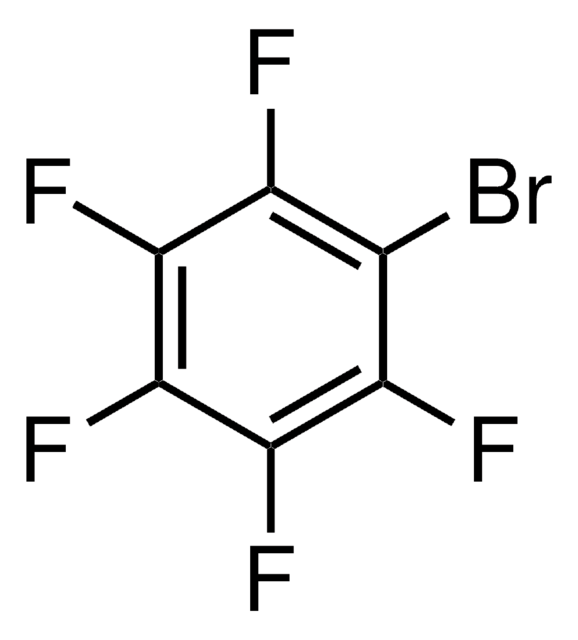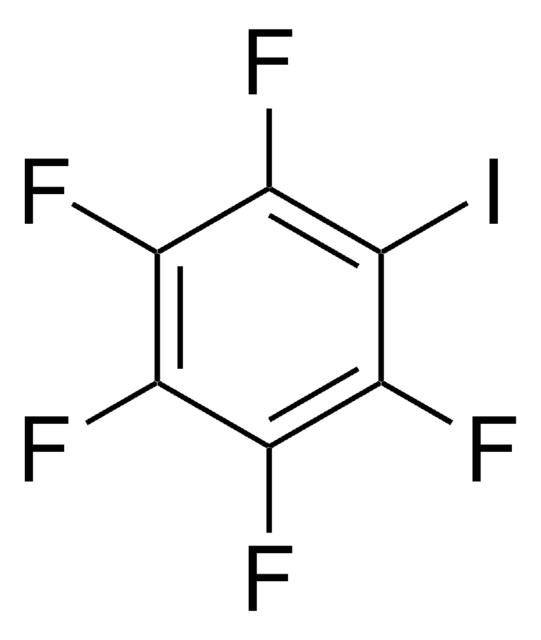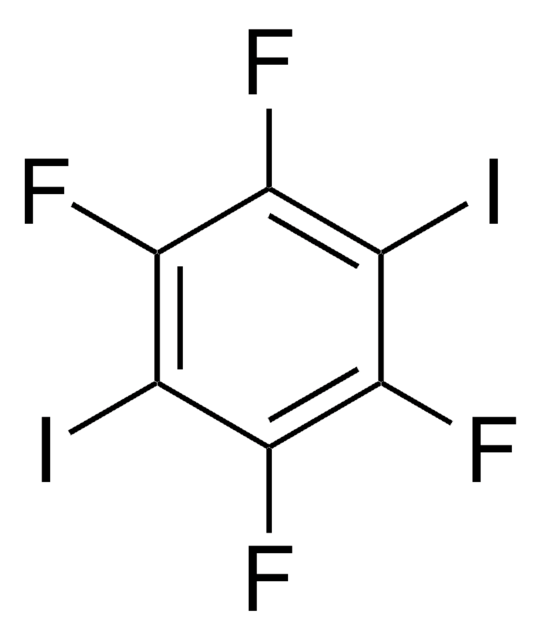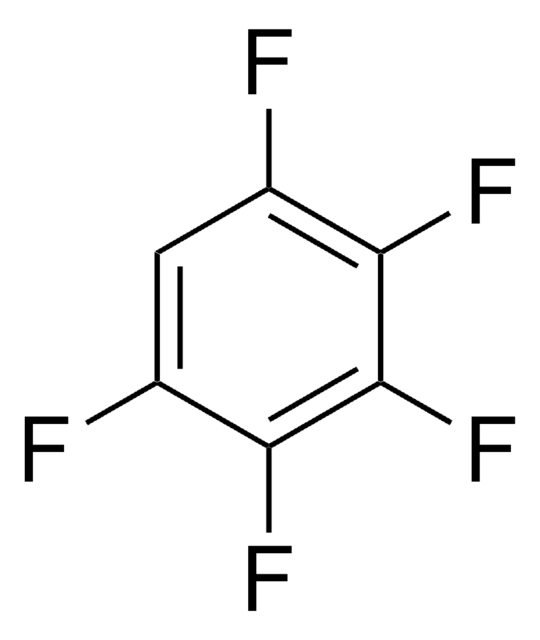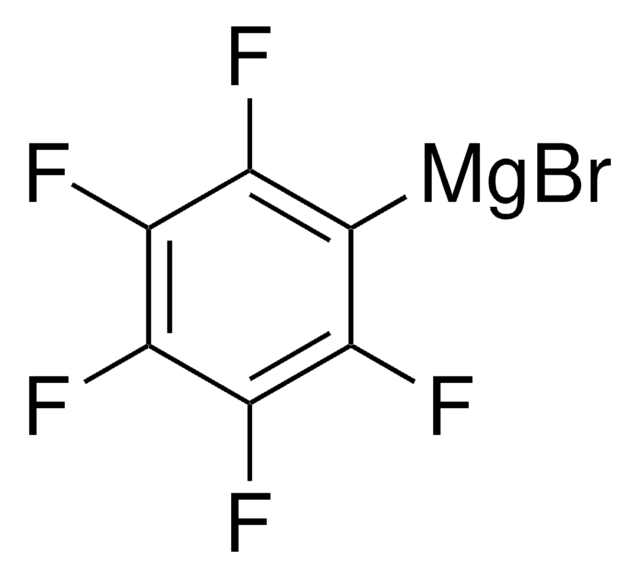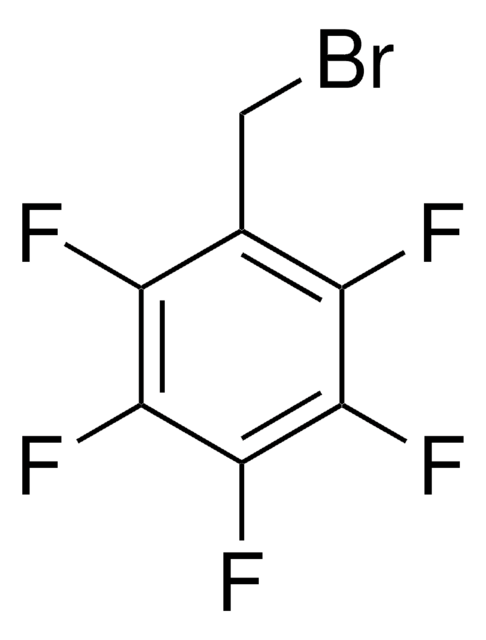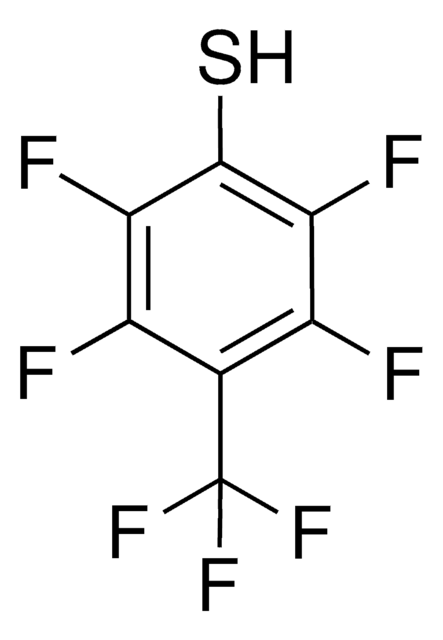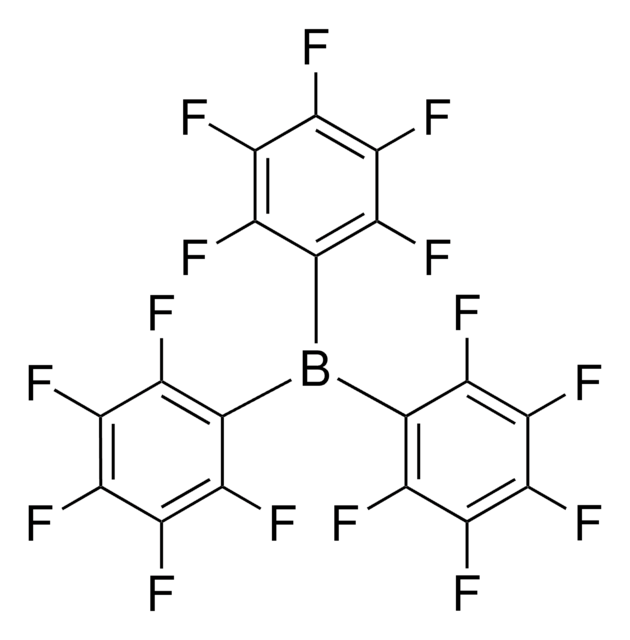About This Item
Recommended Products
Quality Level
Assay
99%
form
liquid
refractive index
n20/D 1.424 (lit.)
bp
122-123 °C/750 mmHg (lit.)
density
1.568 g/mL at 25 °C (lit.)
functional group
chloro
fluoro
SMILES string
Fc1c(F)c(F)c(Cl)c(F)c1F
InChI
1S/C6ClF5/c7-1-2(8)4(10)6(12)5(11)3(1)9
InChI key
KGCDGLXSBHJAHZ-UHFFFAOYSA-N
Looking for similar products? Visit Product Comparison Guide
General description
Application
- 1,2-difluoro-1,2-bis-(pentafluorophenyl)dichlorane via fluorination with elemental fluorine at 128°C
- 5-chloro-1-(difluorochloro)-2,3,4,5,6,6-hexafluoro-1,3-cyclohexadiene via reaction with chlorine trifluoride at −78°C
Signal Word
Danger
Hazard Statements
Precautionary Statements
Hazard Classifications
Acute Tox. 3 Inhalation
Storage Class Code
6.1C - Combustible acute toxic Cat.3 / toxic compounds or compounds which causing chronic effects
WGK
WGK 2
Personal Protective Equipment
Regulatory Listings
Regulatory Listings are mainly provided for chemical products. Only limited information can be provided here for non-chemical products. No entry means none of the components are listed. It is the user’s obligation to ensure the safe and legal use of the product.
JAN Code
193666-100G:
193666-VAR:
193666-BULK:
193666-25G:
Choose from one of the most recent versions:
Already Own This Product?
Find documentation for the products that you have recently purchased in the Document Library.
Customers Also Viewed
Our team of scientists has experience in all areas of research including Life Science, Material Science, Chemical Synthesis, Chromatography, Analytical and many others.
Contact Technical Service